Discover the science behind making your carpenter bee trap irresistible and say goodbye to your patio's Swiss cheese look.
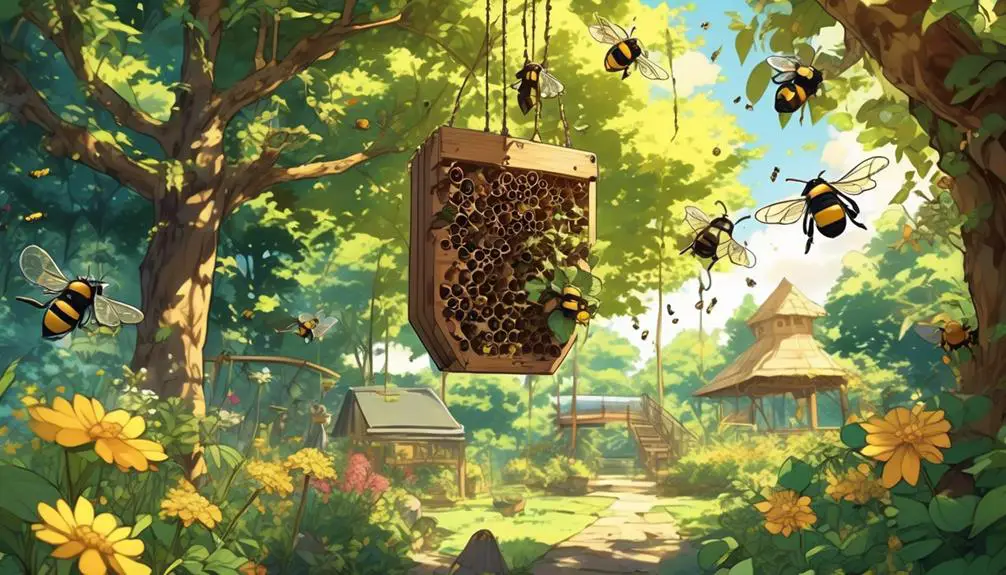
Carpenter Bees Not Going in Trap
Isn't it just like a carpenter bee to ignore your painstakingly crafted trap and continue making Swiss cheese out of your wooden patio? You've purchased the best trap on the market, followed the setup instructions to a tee, and yet, those buzzing pests seem to treat it like a piece of modern art – interesting to look at, but otherwise irrelevant to their daily grind.
It's frustrating, isn't it? But don't throw in the towel just yet. There's a science to attracting these buzz-bombs, and with a bit of insight into their behavior, you might just turn your trap into the hottest bee hangout on the block.
So, let's roll up our sleeves and tackle this issue together, shall we?
Key Takeaways
- Carpenter bees may not be going into traps due to factors such as trap design, location, bait, and timing.
- Trap inefficiency can be improved by analyzing and adjusting these factors.
- Crafting a more effective trap involves using unpainted, untreated wood, creating small round entrance holes, and designing a dark and deep interior.
- Proven strategies for carpenter bee control include using untreated or weathered wood, repairing holes promptly, applying insecticides directly into nest entrances, and changing the environment to make it less inviting.
Understanding Carpenter Bee Behavior
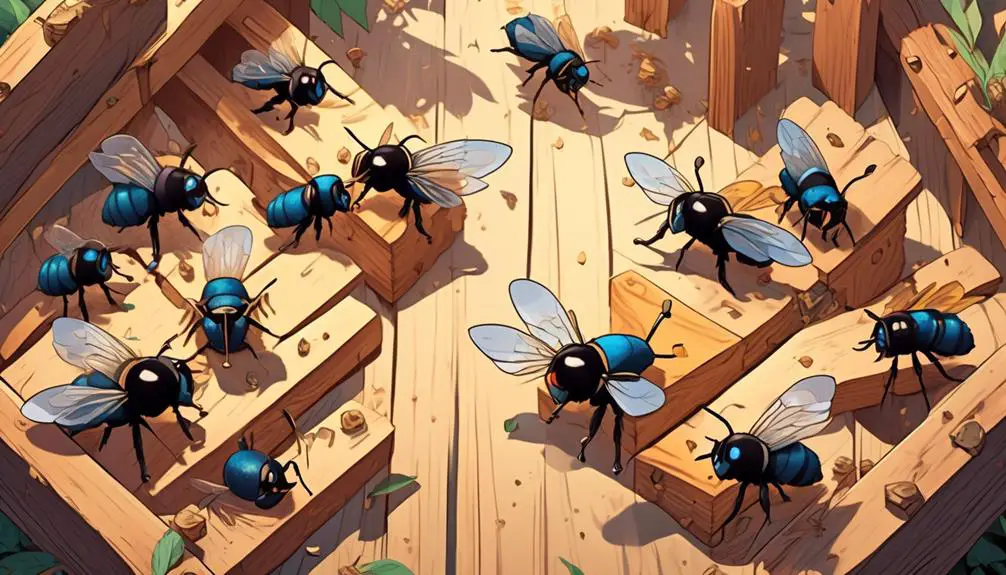
To effectively deal with carpenter bees, it's crucial to first understand their unique behavior patterns and preferences. Unlike other bee species, carpenter bees are solitary creatures. They don't live in colonies, but individually, creating nests by burrowing into wood. You'll often find them in old, untreated, and weathered wooden structures.
Carpenter bees have a unique reproductive behavior. The female bee is responsible for drilling into wood, preparing the nest, and taking care of the larvae. Male bees, while they don't drill or provision nests, are territorial and often guard the nest entrance.
These bees are also known for their pollination behavior. They engage in 'nectar robbing,' a process where they create a hole in the flower's base to access the nectar, bypassing the flower's reproductive organs. This behavior, while detrimental to the plant, is a defining characteristic of carpenter bees.
Understanding these aspects of carpenter bee behavior will enable you to devise an effective and targeted approach to dealing with them. Recognizing their nesting and reproductive habits, solitary lifestyle, and unique methods of nectar collection can provide valuable insights into why your carpenter bee trap may not be working as expected.
Common Types of Bee Traps
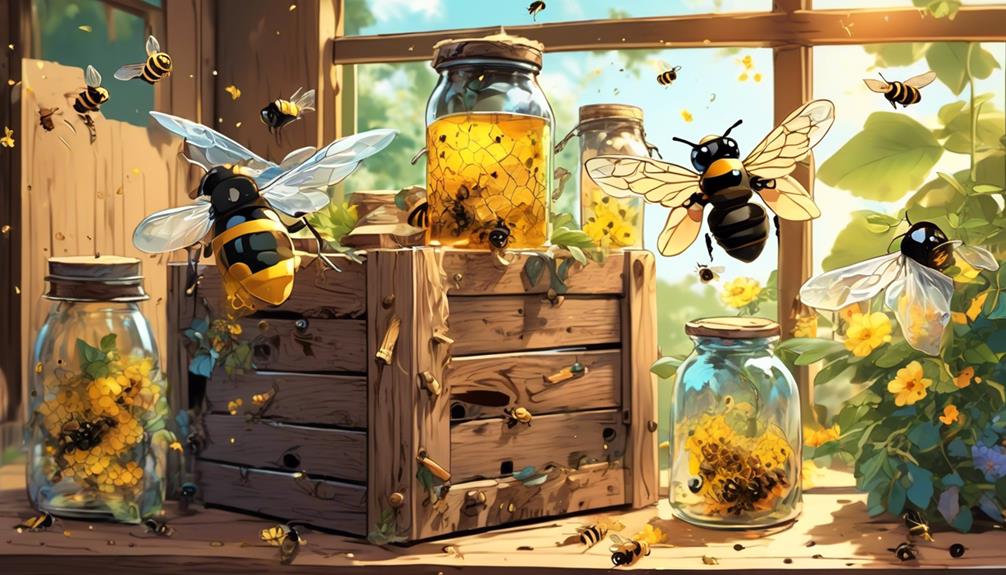
Having outlined the unique behavior of carpenter bees, it's now crucial to examine the variety of bee traps available and how each functions to help you manage these wood-burrowing insects effectively.
Firstly, consider the Carpenter Bee Trap. This trap mimics the natural nesting sites of these bees, thus drawing them in. Once inside, the bees are led into a collection jar through a funnel-like structure, where they're trapped.
Next, the Bottle Trap, often homemade, uses sweet substances to lure bees into a plastic bottle where they become trapped. However, it's not specific to carpenter bees and may attract other bee species as well.
Lastly, there's the Carpenter Bee Bait Trap which uses a pheromone lure to attract carpenter bees specifically. However, its effectiveness can vary based on location and the particular species in your area.
In choosing a trap, it's important to evaluate your specific situation. If you're dealing with a large carpenter bee population, a combination of traps may be most effective. Additionally, remember that traps are only part of the solution – ongoing monitoring and maintenance are also key to effectively managing carpenter bees.
Possible Reasons for Trap Inefficiency
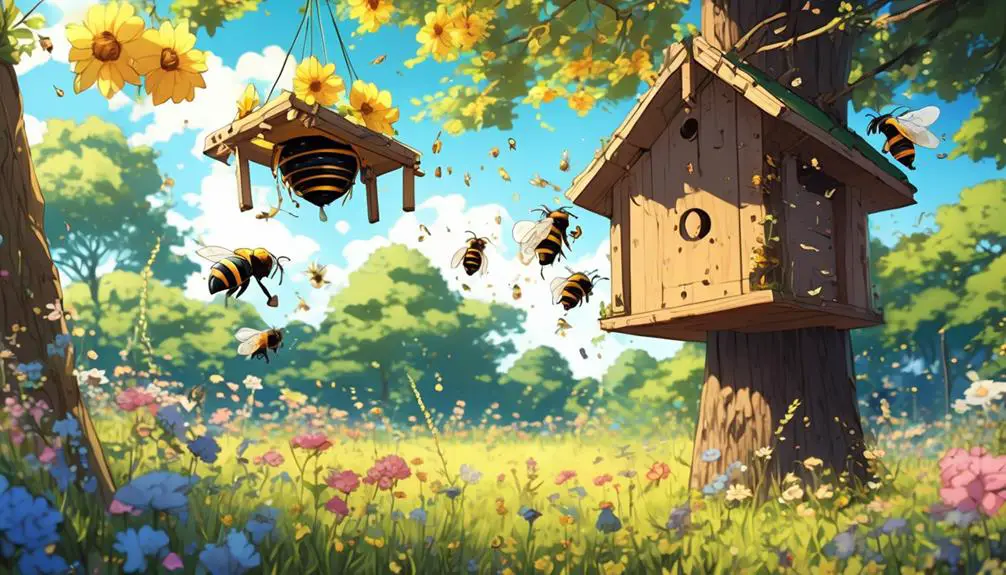
Despite your best efforts, you might find that carpenter bees aren't entering your traps, and several factors could be contributing to this inefficiency. Primarily, the trap design could be flawed. Carpenter bees prefer to break into existing wood holes rather than new ones. So, if your trap doesn't mimic a pre-drilled hole, it's likely to be ignored.
Secondly, the trap's location could be too far away or not in the carpenter bees' flight path. These bees are known for their territoriality and usually stay close to their nests. Therefore, placing the trap near their known activity areas boosts your chances of trapping them.
Additionally, the use of incorrect or insufficient bait is a common mistake. Carpenter bees are attracted to untreated, weathered wood. If you're using a trap with treated wood or the wrong kind of bait, they're less likely to be lured in.
Lastly, your timing could be off. Carpenter bees are most active in spring, and setting your trap at any other time mightn't yield the desired results.
Through careful analysis and adjustments to these factors, you can increase the efficiency of your carpenter bee traps.
Crafting a More Effective Trap
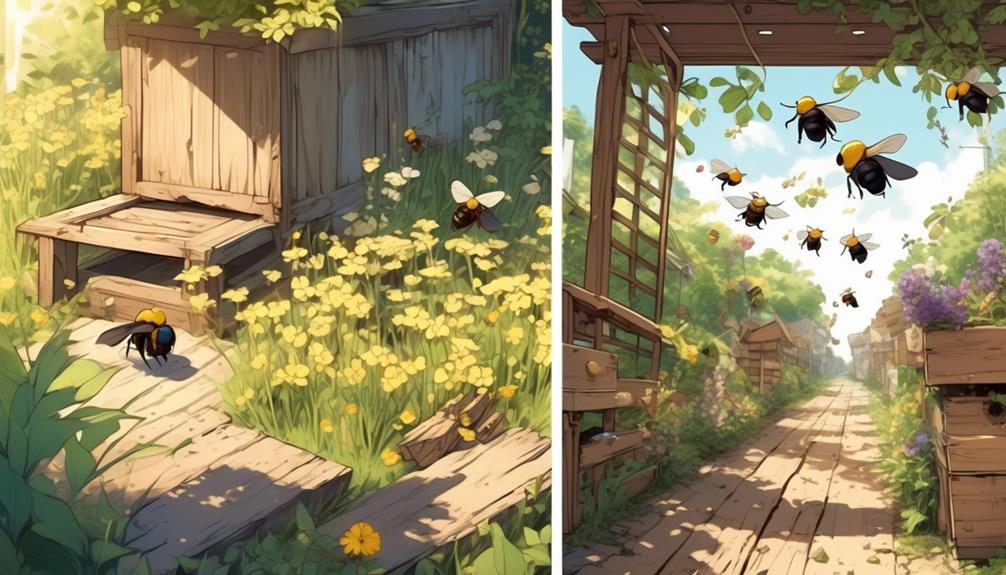
Let's delve into the process of creating a more effective carpenter bee trap, first by addressing the design shortcomings that might be hindering your success.
The key lies in understanding the bee's behavior and adapting your trap to match it.
Carpenter bees, for instance, are attracted to unpainted, untreated wood. So, skip the varnish or paint on your trap; let the natural scent of the wood draw them in.
Next, consider the entrance holes. They should mimic the small, round holes the bees naturally carve into wood, about a half-inch in diameter. Too large, and the bees may not recognize it as a potential nest site.
The interior of your trap is also crucial. It should be dark and deep, mirroring the tunnels the bees chew in real wood. Remember, they're not looking for a quick snack – they want a home.
Proven Strategies for Carpenter Bee Control
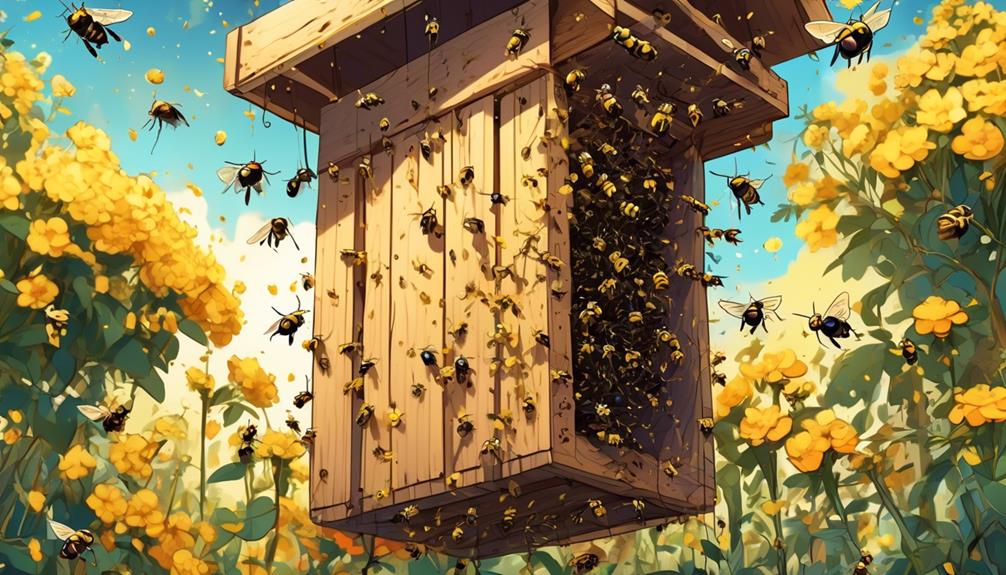
Now that we've optimized the design of your carpenter bee trap, we can explore some tried-and-true strategies for controlling these wood-boring pests.
It's not just about catching them; it's also about changing their environment to make it less inviting.
Firstly, consider the material of your structures. Carpenter bees prefer untreated, weathered wood. By painting or staining your wooden structures, you're making them less attractive to these pests. Oil-based paints or stains are the most effective deterrents.
Secondly, timely repair of holes is crucial. Carpenter bees are opportunistic and will reuse old nests. If you notice any holes, fill them immediately with a wood putty or caulk. After this, paint or stain the repaired area to further discourage re-infestation.
Lastly, use insecticides wisely. Pesticides, like permethrin or cyfluthrin, can be applied directly into the nest entrances. However, remember to apply them at night when the bees are less active. It's also important to know that residual insecticides are only effective for a short period and reapplication may be necessary.
Conclusion
In conclusion, understanding carpenter bee behavior and the types of traps is pivotal in addressing trap inefficiency. Improving your trap design can make a huge difference.
However, remember that control isn't just about trapping, but also about using proven strategies like proper wood treatment and sealing off holes.
Don't be disheartened if your traps aren't immediately successful. With careful analysis and adjustments, you'll get there.


